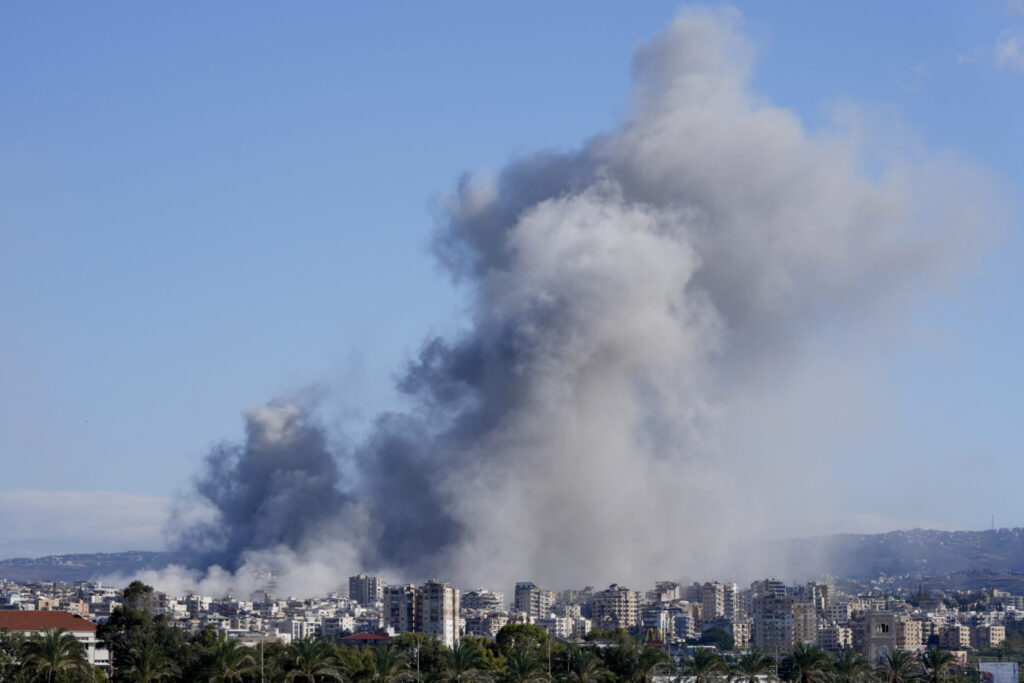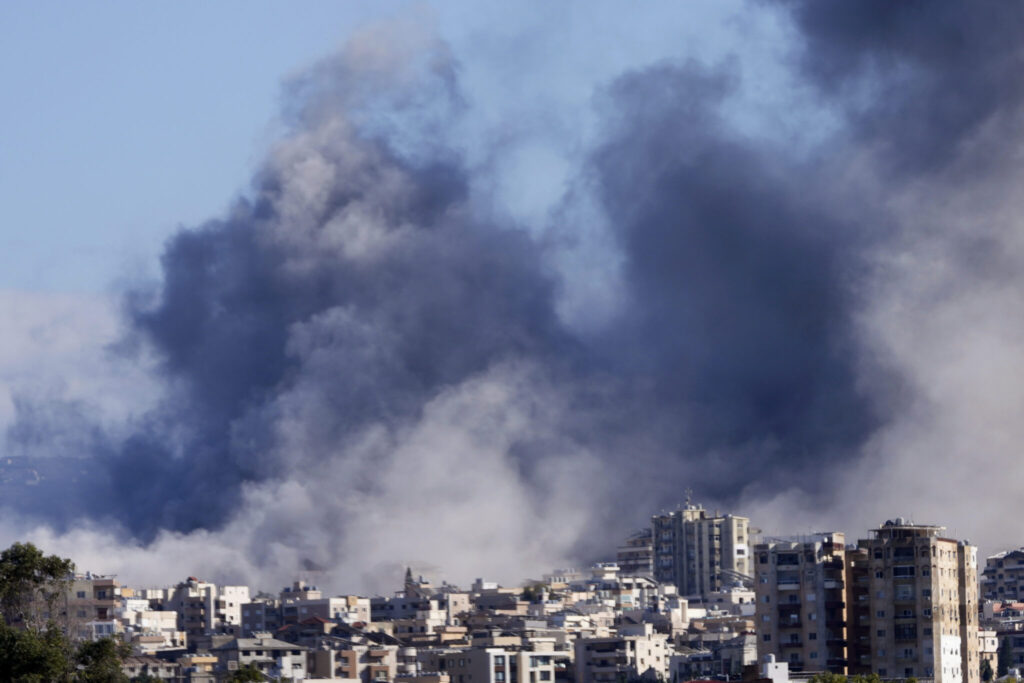Israel ceasefire vote/ Hezbollah conflict/ Beirut airstrikes/ U.S.-brokered peace deal/ BEIRUT/ Newslooks/ J. Mansour/ Morning Edition/ Israeli airstrikes targeted central Beirut and southern suburbs on Tuesday, as Israel’s leadership prepared to vote on a U.S.-brokered ceasefire with Hezbollah. The deal, if approved, would impose a two-month truce, requiring Hezbollah to withdraw from southern Lebanon and Israel to return to its borders. Although officials express cautious optimism, the intense bombardment underscores ongoing tensions and uncertainty about whether the ceasefire will take hold.

Israel Intensifies Beirut Bombardment as Ceasefire Vote Looms
Quick Looks
- Ceasefire Agreement: Israel’s leadership to vote on a U.S.-brokered deal to end its conflict with Hezbollah.
- Military Action: Israeli airstrikes level buildings in Beirut and advance to the Litani River.
- Hezbollah’s Role: Group required to withdraw forces north of the Litani River under the proposed deal.
- Casualty Toll: Over 3,760 people killed in Lebanon during the conflict; 75 Israeli fatalities.
Israel Hits Beirut Amid Hopes for Ceasefire Deal with Hezbollah
Deep Look
As Israel inches closer to a ceasefire deal with Hezbollah, its military continued striking targets in central Beirut and southern suburbs on Tuesday. The attacks come ahead of a critical vote by Israel’s security Cabinet on a U.S.-backed agreement to halt over a year of fighting with Hezbollah.
Israeli warplanes struck densely populated areas near Beirut’s downtown, including the Basta district, and issued warnings for residents to evacuate at least 20 buildings in Hezbollah-dominated southern suburbs. Strikes also targeted the southern city of Tyre and the Litani River region, marking one of the most extensive military operations in Lebanon to date.
The Ceasefire Deal
The U.S.-French-brokered proposal, which has drawn cautious support from both Israel and Lebanon, outlines several key terms:
- A two-month truce halting military activity on both sides.
- Hezbollah withdrawal from areas south of the Litani River.
- Deployment of thousands of Lebanese troops and U.N. peacekeepers in southern Lebanon.
- An international oversight panel led by the U.S. to ensure compliance.
The agreement represents a critical step toward ending the conflict, which began in October 2023 when Hezbollah launched rocket fire into northern Israel in solidarity with Hamas. In response, Israel initiated a large-scale bombardment and ground offensive in Lebanon, resulting in widespread destruction and displacement.
Israel’s Conditions for Ceasefire
Despite optimism surrounding the deal, Israeli officials insist on the right to act against Hezbollah if the group violates the agreement. Defense Minister Israel Katz stressed that Israel would launch military strikes if U.N. peacekeepers fail to enforce the terms.
While Lebanese officials have rejected Israel’s demand to codify this condition into the deal, the European Union’s top diplomat, Josep Borrell, believes the agreement addresses Israeli security concerns. “There is no excuse for delaying implementation,” Borrell said, warning that Lebanon risks collapse without a ceasefire.
Escalation in Beirut
Tuesday’s strikes leveled buildings in the Basta district of central Beirut, marking the second attack in recent days on the heavily populated area. Israeli warplanes also targeted Hezbollah strongholds in southern suburbs and a site near Beirut’s airport.
The Israeli military claimed responsibility for a strike that killed a Hezbollah commander in Tyre and announced its forces had advanced to the Litani River, a critical area under the proposed ceasefire.
Casualty and Displacement Toll
The ongoing conflict has devastated Lebanon, with over 3,760 fatalities, many of them civilians. Israeli strikes have displaced 1.2 million people in Lebanon, while Hezbollah rocket fire has forced 50,000 Israelis to flee their homes in the country’s north.
- Lebanese casualties: More than 2,000 Hezbollah fighters killed, according to Israeli estimates.
- Israeli casualties: 75 deaths, including over 50 soldiers in ground operations.
Implementation Challenges
While the ceasefire proposal marks significant progress, implementation remains uncertain. Past efforts to broker peace have failed, and officials caution that last-minute hitches could derail the deal.
“Nothing is done until everything is done,” said White House national security spokesman John Kirby.
Israeli hardliners, including National Security Minister Itamar Ben-Gvir, have voiced opposition, calling the deal a missed opportunity to eliminate Hezbollah’s presence entirely.







